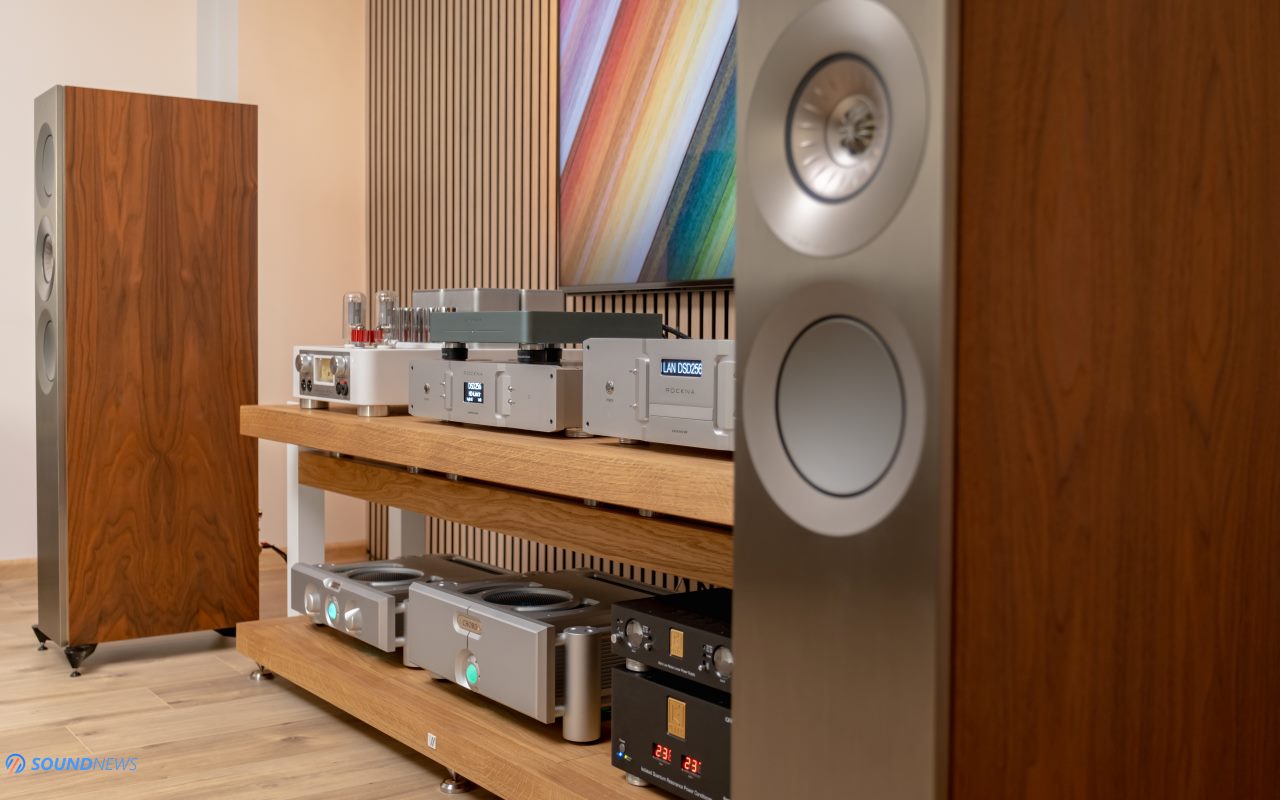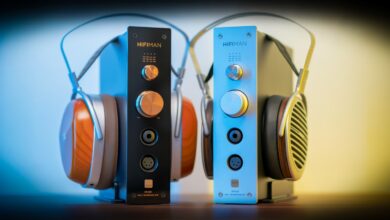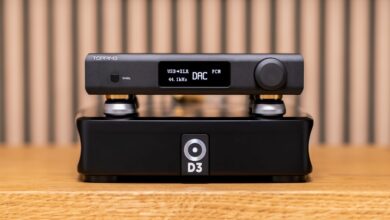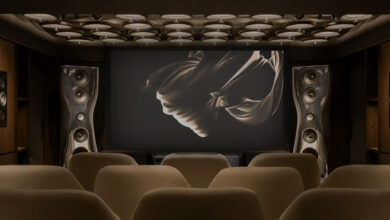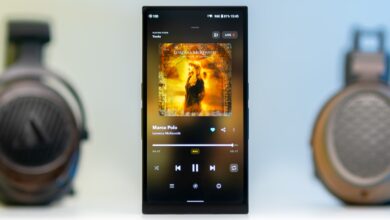LHY Audio SW-10 Ethernet Switch Review
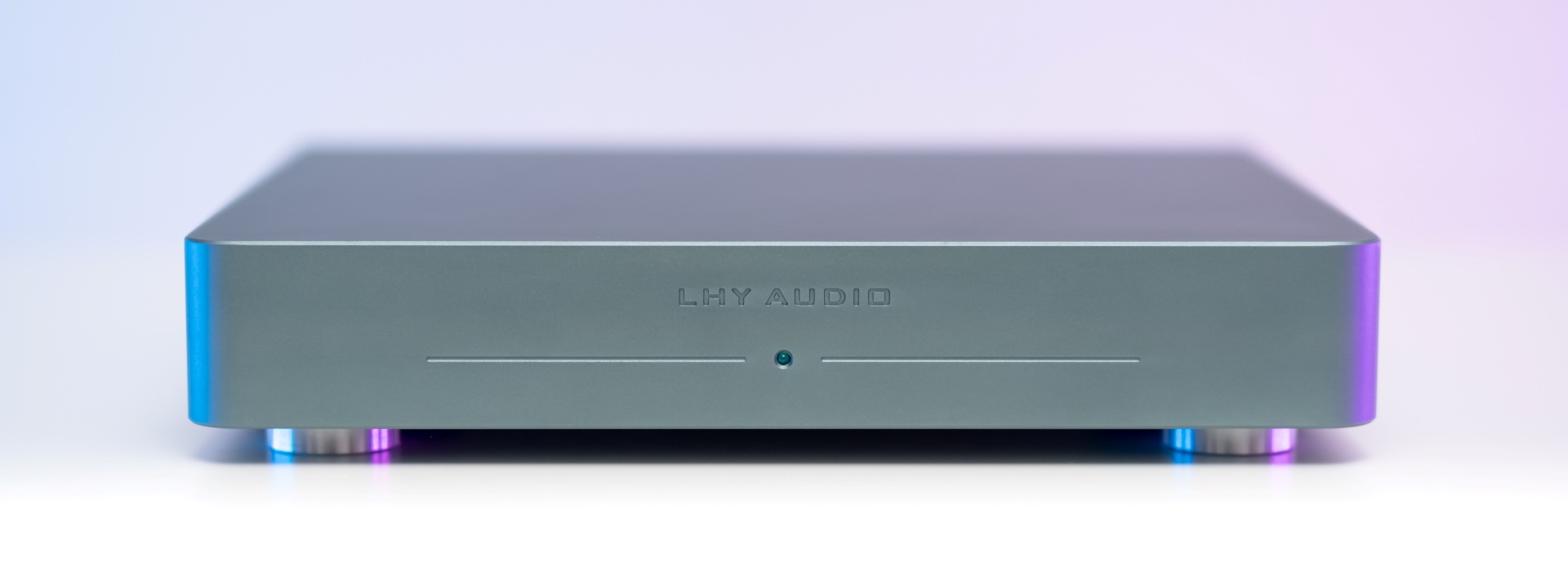
Before I delve into the merits of the top-tier network switch developed by LHY Audio and explain why it significantly transformed two of my setups, I must first confess that as I work from home crafting my articles, I habitually use my PC as a source for my DAC in the office. This is followed by a headphone amplifier and various pairs of high-end headphones. Many headphone enthusiasts worldwide still primarily utilize their PCs as their sole source or digital transport for third-party DACs. Given that the USB ports of D/A converters are becoming more sophisticated, already supporting all available sample rates today, including native DSD transmission and decoding, it’s likely that most users continue to rely on USB connections, without pondering the limited Optical, Coaxial, and AES connections.
I, too, was such an audiophile for an extended period, predominantly utilizing the USB connection as the primary digital transmission between a PC and an external DAC. Around 2010, I started experimenting with small Digital-to-Digital converters (DDCs), usually featuring a single USB input and one or two digital outputs like Coaxial and Optical. Apart from merely converting the digital signal into a different one, these units also cleaned up the mess originating from the source (PC), with the higher-end models re-clocking the incoming signal using higher-accuracy crystal clocks. The first-generation M2Tech HiFace significantly improved the sound of my DAC, to the extent that I vowed never to use the USB connection again.
Over the years, I tested dozens of DDCs, from the more affordable ones like M2Tech HiFace and AD-Labs Mars to much pricier models like Matrix X-SPDIF2 and 3, Audiobyte Hydra X, Hydra Z + ZPM, and the Denafrips Gaia and Musician Phoenix. The latter two had multiple digital inputs and every possible digital output, designed not only to be used between your PC and DAC but also after your CD player, wired or wireless streamer, considerably broadening their use cases. However, the significant problem with DDCs is that people no longer listen to music primarily in front of their PCs, and even if a DDC resolves the primary issues of the USB connection, it can’t solve all of them.
After concluding my review of the Trafomatic Primavera and acquiring the Rockna Wavedream Signature DAC, followed by the Wavedream NET Roon server, music server, and wired streamer, I believed I had the most superior headphone system money could buy. I took a week off from writing and filming just to relish that setup and be swept away by music. A month later, my close friend and our newest writer, Catalin Cristescu, invited me to listen to his newly acquired Trafomatic Primavera (yes, we have two of them! Sounds crazy, doesn’t it?) along with a Chord DAVE DAC and Chord M Scaler.
I inquired why I should bother listening to a setup I already have at home, and he insisted that I should try his. So, I grabbed a bottle of wine, and an hour later, I was already engrossed, as he lives not too far away. I noticed that the overall character of the music remained the same, but there was complete silence between passages, an effortlessness that was missing in my setup. I revisited several tracks that I had listened to an hour ago at my place, and sure enough, everything felt more natural; the note separation was superior, and finally, I could fully immerse myself in the sounds, something I found challenging back home.
I inquired about the difference, and Catalin, with a huge smile on his face, pointed to an LHY Audio SW-6 Ethernet switch placed before his streamer. I was incredulous, ‘This is the only difference?’ I asked him. ‘Yes, that’s the only difference.’ I returned home less enthusiastic, as some of the magic seemed to dissipate, and I couldn’t enjoy the sound of my setup anymore. After a few exchanges via email with the esteemed individuals at LHY Audio, it was decided that I would review their flagship SW-10 Ethernet switch in two of my main systems.

The Signal Path
Before delving into this review, let’s first consider the signal path and understand why having a clean signal path is crucial, particularly in a well-constructed stereo or head-fi rig.
Instead of utilizing the standard CAT 7 Ethernet cable directly from the ASUS router into the streamer, I introduced a TP-Link media converter (RJ45 to optical) to eliminate the noise originating from the Ethernet cable. I connected the optical cable into the LHY Audio SW-10, paired with a Rockna Wavedream NET Roon Server/wired streamer in the main listening room. For enjoyment, I also used an EverSolo DMP-A6 that was loaned to me. The primary DACs employed for this evaluation were the Rockna Wavedream Signature XLR and the Chord Electronics DAVE. These were accompanied by a Chord Electronics Ultima 3 Pre and Ultima 5 Power amp, powering a pair of KEF Reference 3 and Raidho TD 2.2 speakers.
In my office, the Wavedream Signature DAC was connected either to a Trafomatic Primavera tube amp or to an Enleum AMP-23R solid-state amplifier, primarily driving the HiFiMan Susvara.
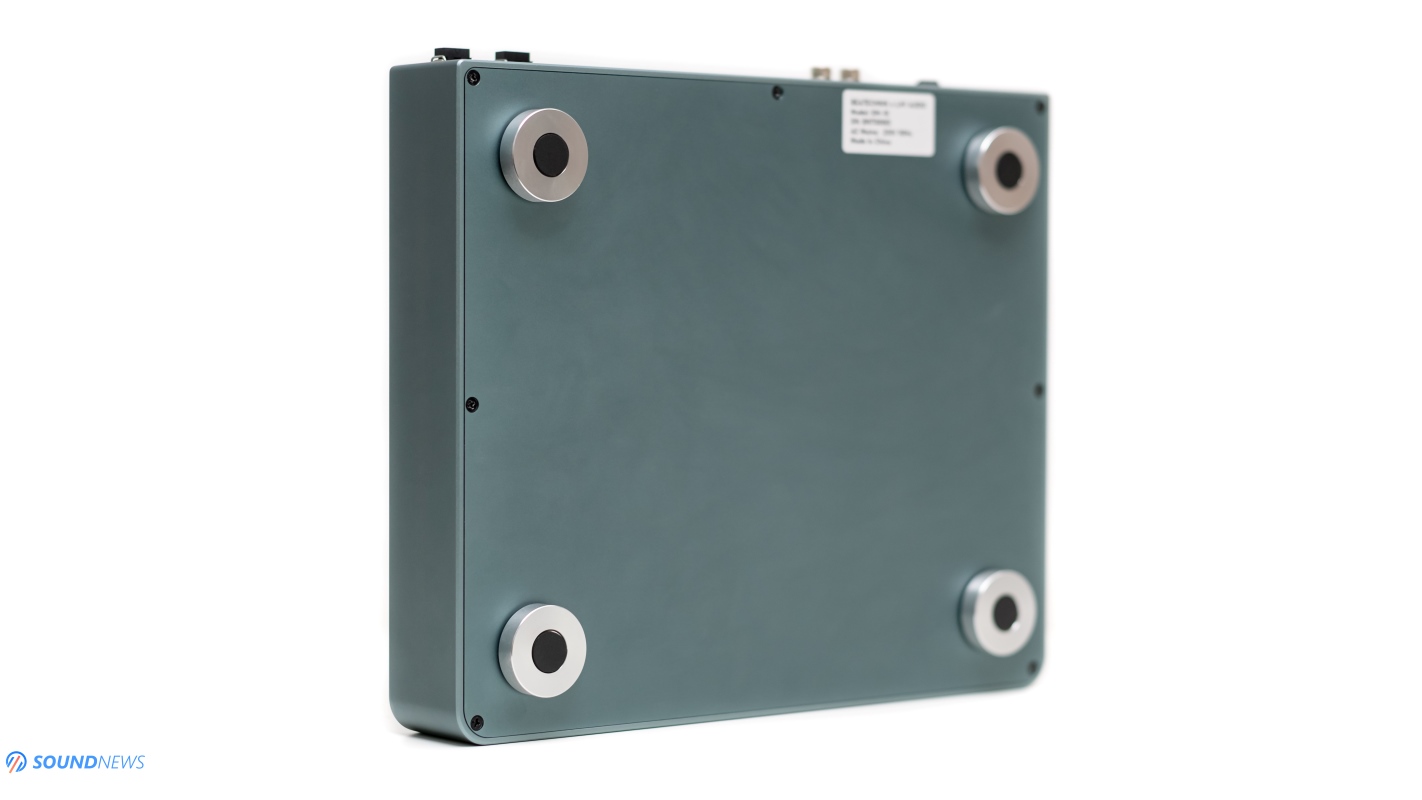
Design & Build Quality
Imagining an Ethernet switch, the last thing that would come to my mind is a beautifully CNC machined unit with massive metallic feet and a stunning appearance. LHY Audio ensured that all their Ethernet switches would resemble proper HiFi components besides a rack full of high-end goodies. Sometimes, a picture is worth a thousand words. Just look at the smooth lines, the dimmed LED light, the thick aluminum body, and the substantial metallic feet with rubber inlays.
LHY Audio is a subsidiary of Jay’s Audio, and the individuals behind it also distribute Denafrips units worldwide. I’m unsure if the designers are shared between these brands, but these switches seem to have drawn some design cues from Jay’s Audio and Denafrips. The SW-10 is not your typical D-Link or TP-Link switch. It’s notably weightier, almost 4 kilos, wider, and deeper, resembling a high-quality DAC rather than a standard Ethernet switch.
The front plate boasts a ~1 cm thickness, and its overall structure feels sturdy and well-crafted. Around half of my music listening happens in my office with a high-end headphone setup situated near a powerful 8-antenna wireless router. Thankfully, the SW-10 doesn’t pick up any of the disruptive wireless interference, thanks to its impenetrable aluminum case.
All the screws were moved to its back for a clean and elegant look, and the laser engraving appears precise and easy to read. On its front plate, I’ve noticed a single low-intensity LED that doesn’t cause any discomfort in a dimly lit environment. I’ve got the grey-green anodized version, but they also offer it in an anodized black variant if you prefer. They’ve opted for rounded edges, ensuring that maneuvering expensive equipment near it won’t trigger any issues.
It doesn’t consume a lot of power and barely warms up even after a week of continuous use. You can place anything below or on top of it, even burning hot DACs or headphone amplifiers, if you so desire.
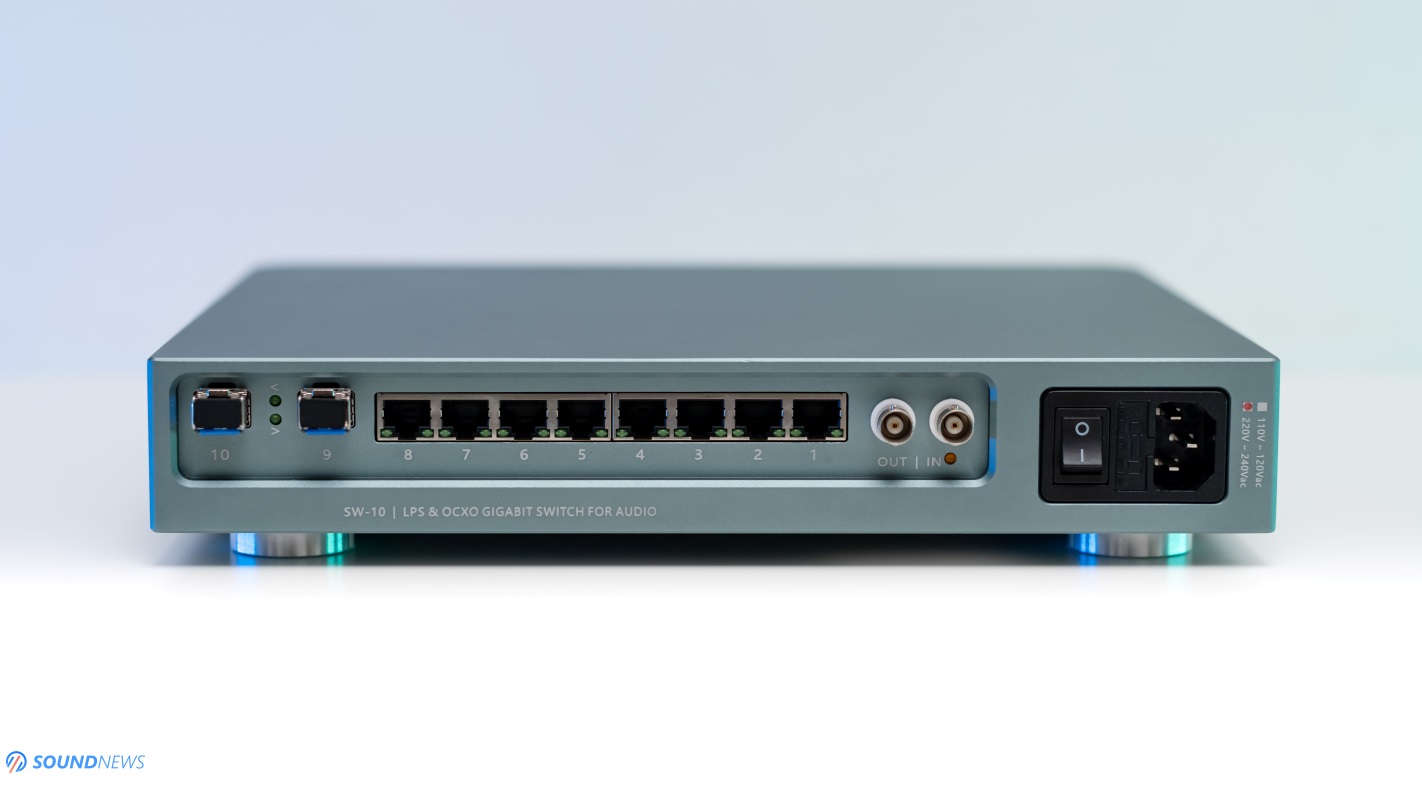
Controls & Connectivity
First and foremost, the SW-10 won’t overwhelm you with a complicated layout. After connecting a power cord and toggling the switch at the back, it will power on gradually. You won’t find a single button on the unit, only an LED on the front indicating its operational status.
At its back, you’ll discover two Gigabit Ethernet SFP single-mode/multimode ports designed to deliver maximum performance. If you haven’t yet used a media converter or if your internet provider only offers an Ethernet connection to your home, you can utilize any of its eight RJ45 Gigabit Ethernet ports. The SW-10 already utilizes a sizable OXCO clock, but if you wish to synchronize it with an external clock generator, LHY Audio offers that option through locking-type BNC connectors. In terms of outputs, you can select any of its Gigabit Ethernet RJ45 ports, preferably using a higher-quality Ethernet cable that connects directly to your wired streamer.
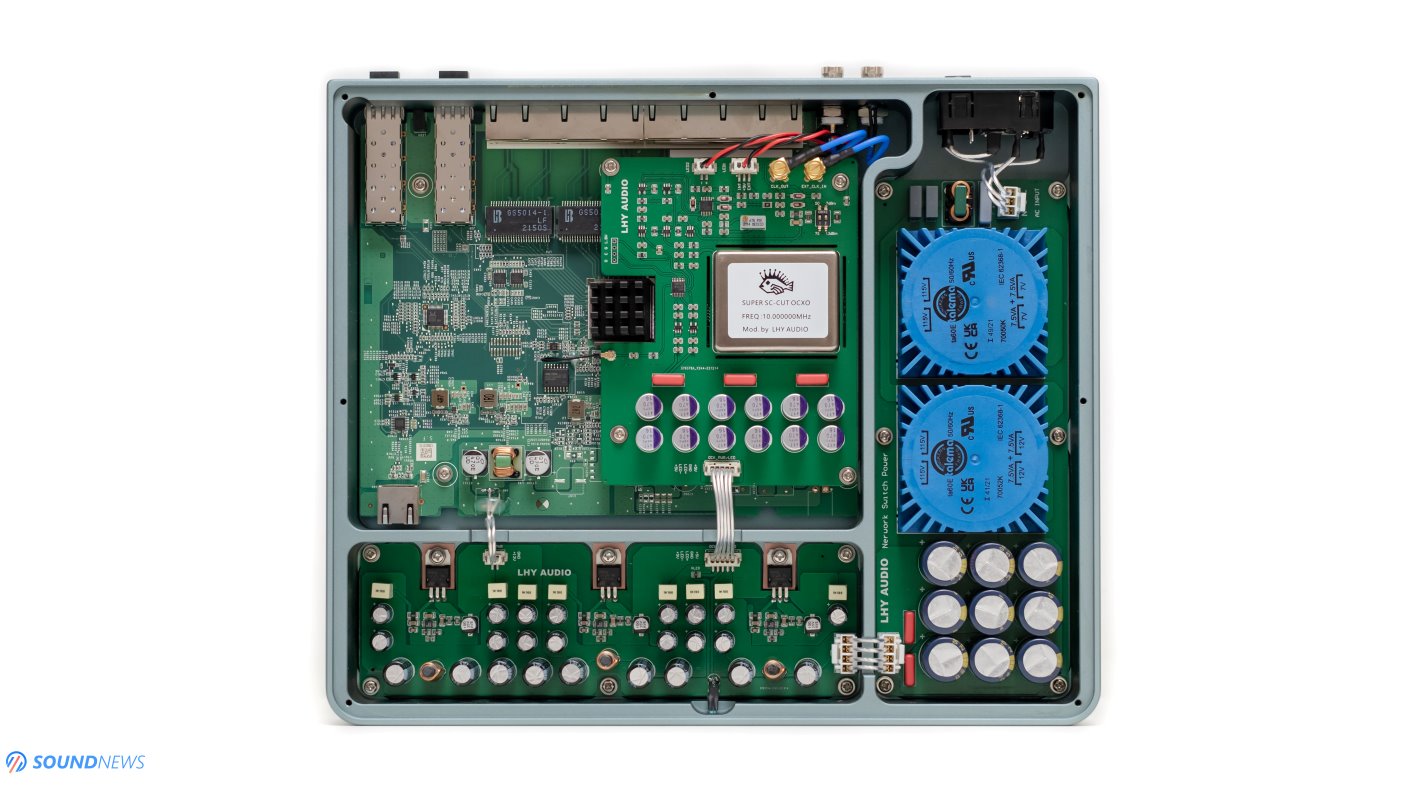
Under the Hood of LHY Audio SW-10
These guys followed every rule a high-quality HiFi component should have. We have an EMI filter, two encapsulated linear transformers, and several filtering caps, we have a multi-stage LDO DC filtering and a high-speed DC rectifier. We have a high-precision SC cut OCXO oven-controlled clock and obviously, a business-grade Gigabit Ethernet switch made by Cisco. You have to love the honesty of these guys, as at the end of the day this is still a pimped-up version of a Cisco switch with a much nicer power supply implementation, filtering, and clocking. What’s interesting is that the AC to DC conversion, multi-stage DC filtering, and re-clocking were put in three distinct compartments perfectly cut with a CNC machine.
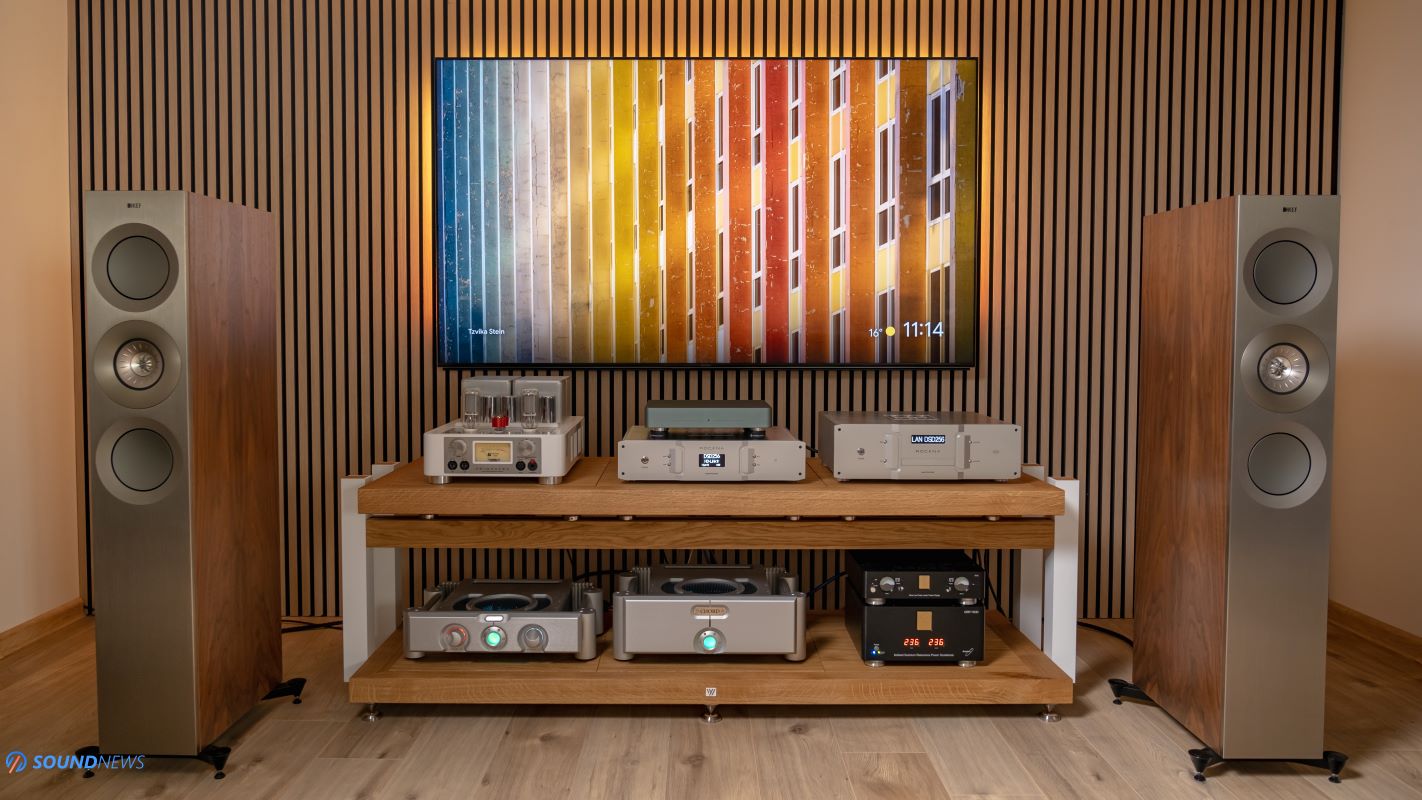
This Is The Way (Sound Performance)
Knowing that we finally got a local Raidho dealer, I was already making calls the next day, inquiring if I could test a pair in the comfort of my home. The fine gents of AVstore obliged and on the next day, I was unpacking a pair of TD 2.2 which sounded like heaven to me at several audio shows I attended. These weren’t brand new, they already had around ~300 hours on them, so I prepared a coffee and sat down for a long listening impression.
My closest friends knew that a pair of TD 2.2 were arriving that day and everyone was awaiting some preliminary impressions from me, getting instead a long radio silence…as honestly, they didn’t sound the way I imagined they would. The timing was off, there was an unnatural timbre and the voices weren’t soul-grabbing to me as I knew they should. Their technical performance was impressive and it would be a real challenge to outperform them in terms of speed, transparency, and detail retrieval (unless your name is Michael Boressen or Lars Kristensen), but the music wasn’t clicking into place. The sound felt unremarkable at the end of the day, blaming my (bad) mood and day-to-day activities that didn’t let me focus on the music. On the third day, I called my buddy Catalin, asking if I could borrow his LHY Audio SW-06, and an hour later, we started listening together.
After including the switch between the wireless router and the Rockna Wavedream NET, the words were unnecessary. Out of a sudden, the voices started pouring slowly toward us, there was some sort of musicality that enthralled us. The timing issues that I previously had vanished away! The cymbals were no longer fake sounding, but clear and defined, without becoming harsh. Higher-pitched female vocals were no longer bothering me. We didn’t lower the volume, on the contrary, we went higher as we found them soothing and powerful at the same time. The so-called Digitus went out of the window, replaced with a liquid presentation, pouring so naturally as if a vinyl record was playing music for us. Catalin asked what’s the problem with the system as it sounded fabulous! I pointed out the switch that brought back emotions, warmth, and smoothness.
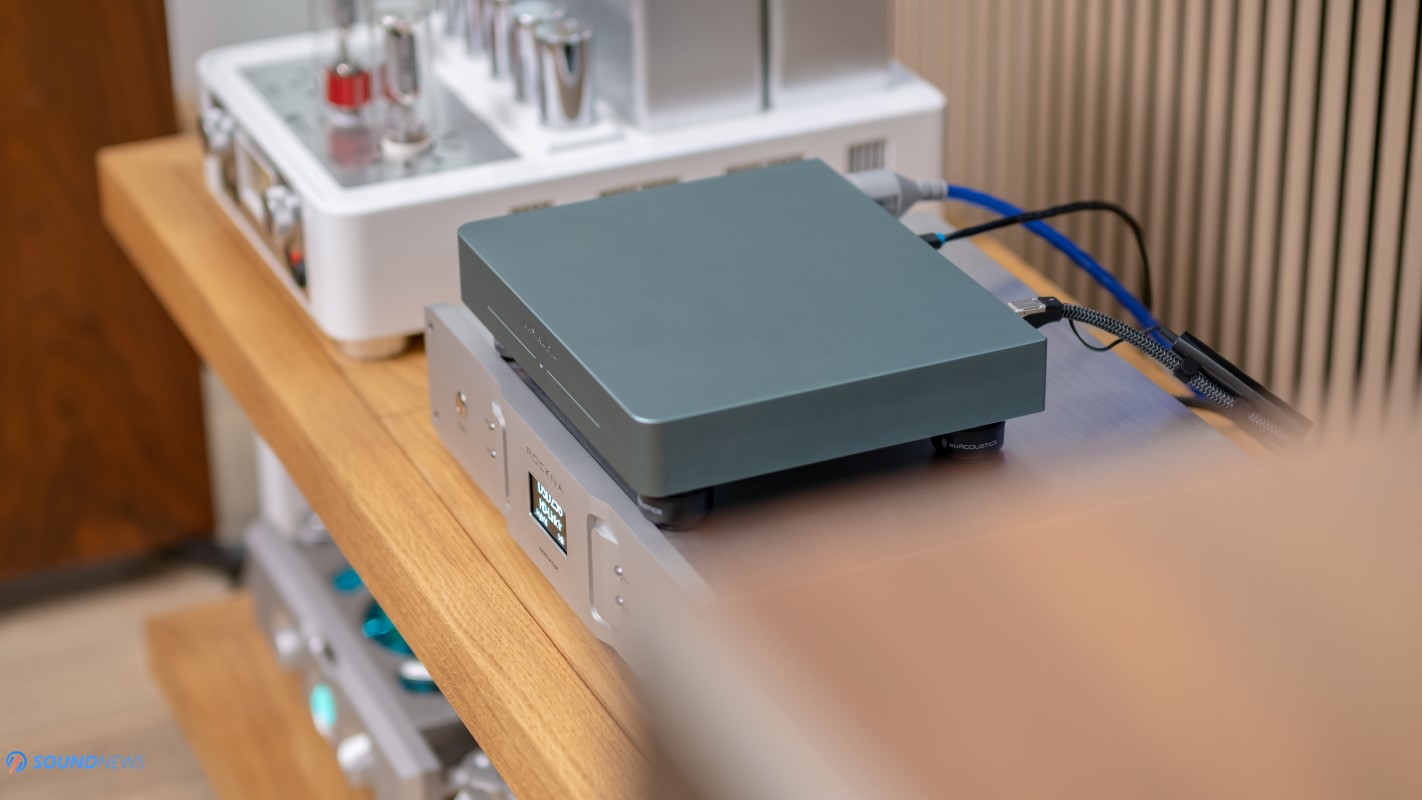
Strange Are The Ways Of Networking
A bit is a bit, right? All DACs sound the same, right? All digital cables shouldn’t have an impact on the sound, right? The thing is, we aren’t digital creatures and we aren’t listening to music via an Audio Precision APx555 audio analyzer. We are human beings that interact with the world that is changing at a rapid rate around us. We don’t only hear the music, but we also feel it. There are so many variables and things that cannot be measured, yet we can discern, feel, and hear them so easily.
When it comes to digital audio, everything has an impact, even the wireless radios in your room, let alone the cables that transmit the signal. My Rockna Wavedream NET is a Roon server – a PC powered by a linear power supply, but its ethernet port is not filtered in any way. When I was listening to music via its internal 4TB drive and then switching back to Tidal or Qobuz…things were changing for the bad, the music sounded off via streaming services. Going back to its 4TB drive, bypassing wired streaming, and sending all that data via I2S connection to the Rockna Wavedream Signature DAC suddenly everything was becoming natural, clean, highly entertaining, and incredibly impactful. When I was going back to streaming services the life felt sucked out from music and the difference was big, that I started collecting offline lossless music in various formats that my DACs can play.
The LHY SW-10 switch put in between the router and Wavedream NET solved my biggest problem and I can finally stream music and enjoy both Tidal and Qobuz, without having a sense of dread on my face. The biggest differences didn’t happen in the detail retrieval department, although there was quite a difference in perceived detail. The main differences were: Timing and Noise Floor.

You won’t believe how much noise is being transported by an Ethernet cable coming from your router. After adding the SW-10 switch I got a weird feeling that the music played louder, everything was more defined, the leading edges were clearer and the finest details were coming to the surface. After a day of listening, it was clear to me that the noise floor was lower, getting these massive black holes in between passages. The notes themselves felt wider spread and more separated, their shape was clearer and their energy was more vibrant. When the noise floor goes down, it is natural that inner detail and small intricacies will start going to the surface. The smallest details can sometimes make a world of difference, especially in a high-end setup where there aren’t additional ladders to climb. It felt as if I upgraded my DAC to the Ultimate version coming from a distant future.
The second biggest difference was in terms of timing. My KEFs are fast…but not Raidho fast! The timing difference was considerably bigger on the Raidho’s, and it felt so incredible that I simply refused to listen to music without the switch. The timing is quite probably, the most important thing in audiophilia. After a lifetime of work in audio engineering, Lars Kristensen of Audio Group Denmark told me that we hear in transients and not in frequencies. We are impressed a lot more when the timing is right, as everything will fall into place, we don’t need a perfect frequency response, all we need is perfect timing, note sustain, and natural decay. I never thought about that, but you know what? He’s right! The timing difference with and without the SW-10 was there. Music sounded fake without it and suddenly it was real, flowing naturally with the switch in place. My tunes could go from slow to fast and vice versa and yet everything will sound just natural. Without the switch, the music felt off, even if the frequency response was the same. I used the same electronics, speakers, D/A converters, and wired streamers and yet there was a world of difference.
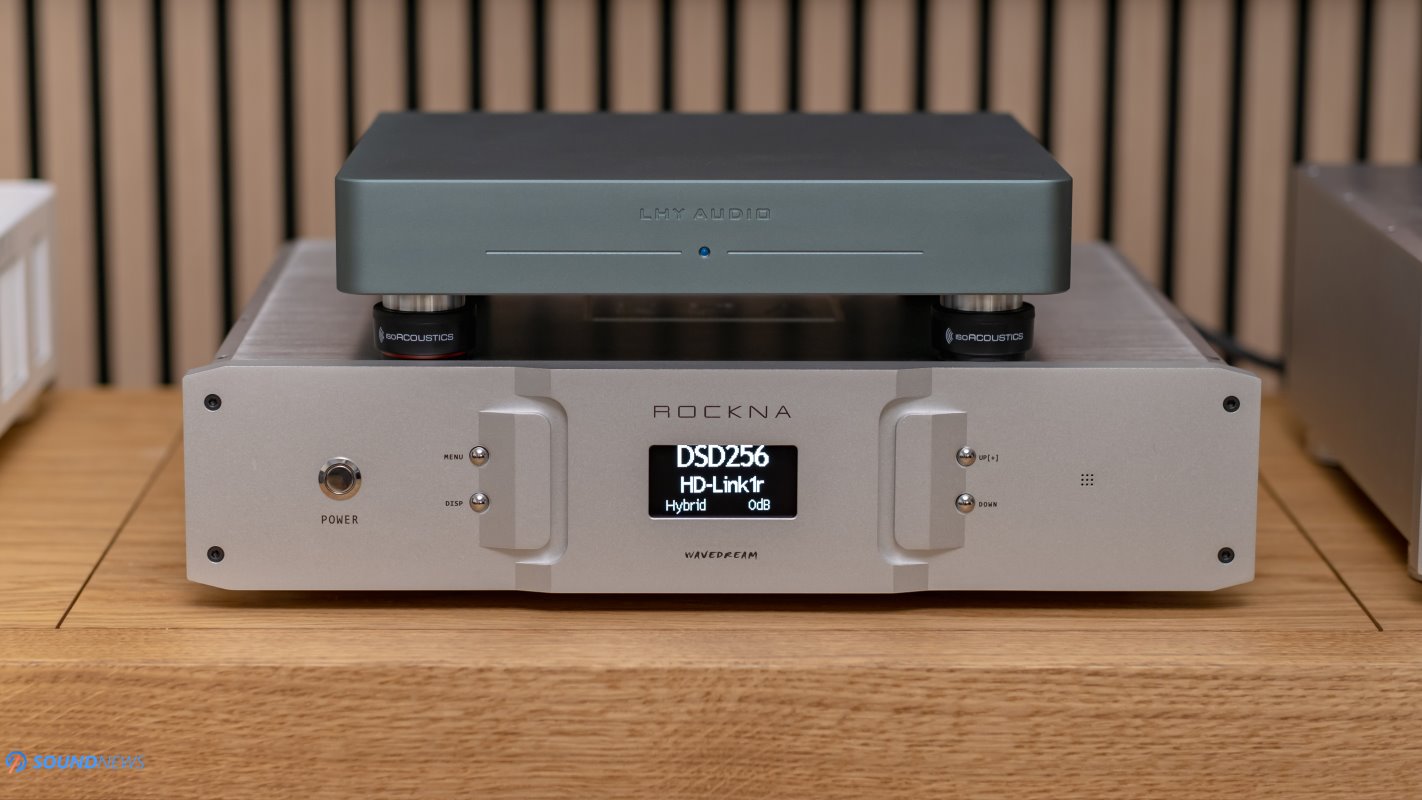
Frequency What?
In all my reviews, I typically discuss a unit’s frequency response, specifically if it affected different parts of the frequency range. However, doing the same thing with the SW-10 wouldn’t be entirely fair to you. To be honest, I’m obtaining similar measurements with both headphones and speakers, yet there’s a notable difference in the flow of the music and its timing. The frequency response remains unchanged, but the emotional impact lost due to poor timing or a higher noise floor has now returned. Initially, it seemed like the midrange stepped forward into the spotlight, expanding its presence for the listener. The overall energy feels enhanced, more bass punch and layers, a warmer midrange, and a less fatiguing treble—all due to the cleaning up and re-clocking of the audio signal.
Despite the evolution of D/A converters and the widened feature sets of both wired and wireless streamers, they remain vulnerable to noise originating from power sources or internal electronics generating interference. Electronic devices invariably create noise, and the signal path captures all of it. I conducted measurements on some of my headphones, both with and without the switch, third-party cables, and a passive power conditioner. While my measurement setup didn’t discern a difference, the impact on timing and overall enjoyment was significantly apparent.
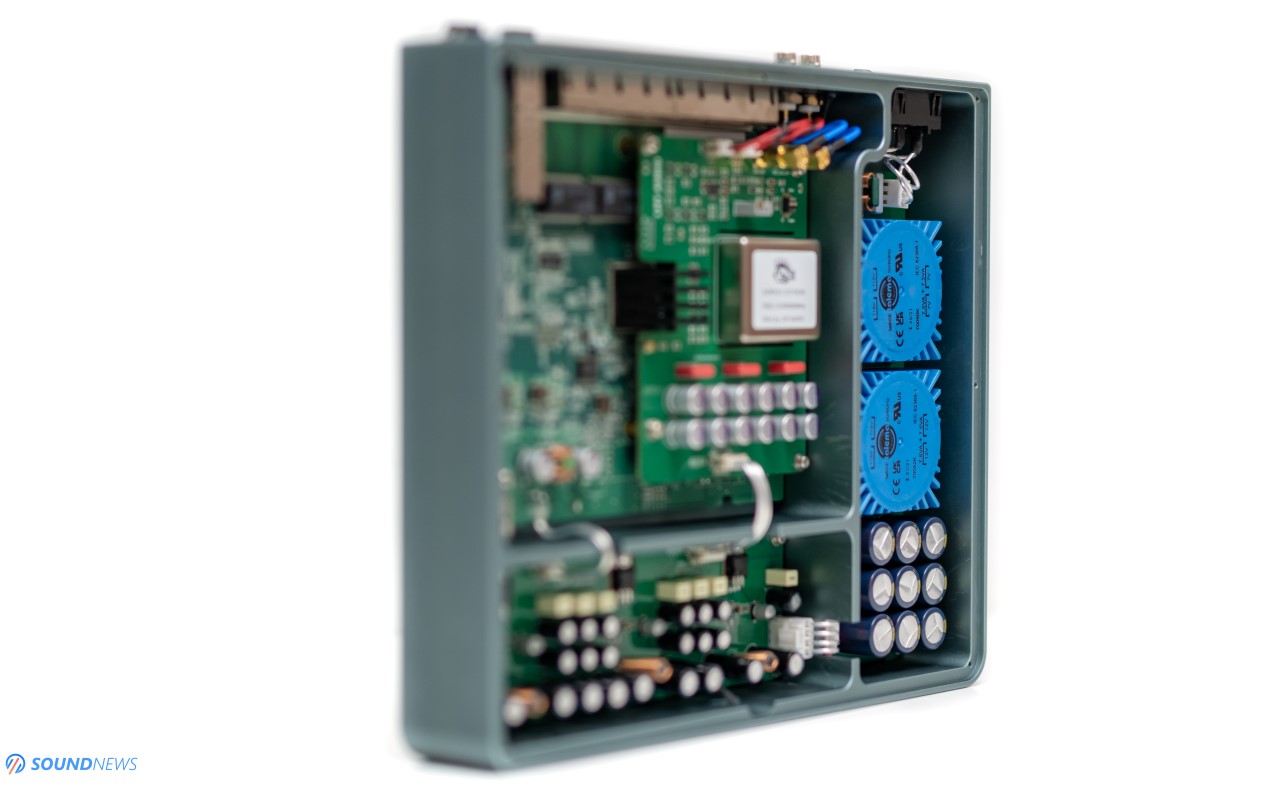
Tone It Down A Little
A few days later, I decided to use an EverSolo DMP-A6 streamer along with the recently announced Topping DX9, an all-in-one DAC/Preamp/BT Receiver/Headphone amplifier, to drive a notoriously hard-to-drive pair of HiFiMan Susvara. The EverSolo stands out for its impressive features, although its lighter presentation while enhancing some aspects, detracts from the overall dynamics, which is my only quibble with it. Despite this, it remains among the best, if not the best unit available currently. For those seeking a more substantial punch and improved dynamics, LHY Audio has introduced a power supply upgrade kit specifically designed for the DMP-A6 (available here).
With the SW-10 incorporated into the setup, there was a noticeable improvement in the sound. Once again, there was a sense that the sound became clearer and more defined, though not quite matching the level experienced through the Raidho TD 2.2. I observed similar effects, albeit not as pronounced. Ultimately, the music acquired a sweeter, more natural quality, along with a slight enhancement in dynamics, but the change wasn’t as profound as in my stereo setup.
If you’re looking to enhance your headphone setup, I recommend beginning by replacing the USB connection from your PC. Start with a high-quality wired streamer and then consider investing in a network switch. If the SW-10 is beyond your budget, consider their SW-06, which delivers a sound very close to the SW-10. Combining these components is likely to deliver unprecedented levels of transparency, detail retrieval, a more natural musical flow, and peace of mind.

A Comparison
Melco Audio S100/2 ($3.395) VS LHY Audio SW-10 ($1.349)
Before my departure to Warsaw for the Audio Video Show 2023, Catalin kindly lent me his flagship Melco S100/2, which he uses in his primary stereo setup. He moved the LHY Audio SW-06 to the office where his head-fi station is situated. I’ve had several encounters with the Melco S100/2, the first being when Sennheiser provided their legendary HE-1 electrostatic system for an in-depth examination. The internal DAC of the HE-1 wasn’t up to today’s standards; it was mediocre at best. As we sought the very best performance, we utilized the Melco S100/2 switch to feed the Wavedream NET, fully unlocking the system’s potential.
The S100/2 was meticulously designed as a high-grade audio switch, with just a single caveat – to achieve its best performance, you’ll need to add an external linear power supply. Featuring six ports rated at Gigabit speeds and two ports rated at 100 Megabits, optimized for audio, the S100/2 also retains the SFP (small form factor pluggable) connections from the original model. These connections permit upgrades to optical fiber connections, offering even greater noise isolation and improved sonic performance.
Most of my comparisons took place in my stereo setup. Despite my fondness for the HiFiMan Susvara, the Raidho TD 2.2 proves to be significantly more resolving at low-level information and sounds faster and more dynamic, especially when listening to reference recordings. In its stock form (without an external linear power supply), the S100/2 is absolutely fabulous! It exhibits a smooth, laid-back, and organic sound. The music flowed so naturally that I was too captivated to take notes. Swapping it with the SW-10, the sound became weightier, punchier, and the low-end extended deeper. However, it lost a bit of micro-level information and some of that legendary flow compared to the Melco. The Melco sounded slightly more refined, but this is to be expected given the price difference. Both units made an impressive sonic impact on me, albeit with slightly different characteristics.
When I shifted to blues and jazz, the laid-back character of the S100/2 tipped the balance in its favor. It rendered old blues music eerily real, completely immersing me in the music. Yet, on deep, rumbling beats, the SW-10 brought more body and energy in the lowest octaves. The following day, I decided to power the Melco S100/2 with a KECES P14 ($1800) linear power supply, usually used to power my wireless router and a media converter. With the addition of the P14, the pricing difference increased further ($5195 VS $1349), and suddenly, the Melco came out like a roaring beast, delivering punchy dynamics similar to the SW-10, yet surpassing it in detail retrieval, smoothness, and refinement. After careful evaluation, the combination of KECES & Melco exhibited more refinement, transparency, and detail, winning the final round of this comparison. It wasn’t surprising that the KECES P14 and Melco S100/2 performed better. However, the fact that the SW-10 held its ground at a fraction of the cost is certainly something to consider, particularly if you haven’t yet settled on a choice.
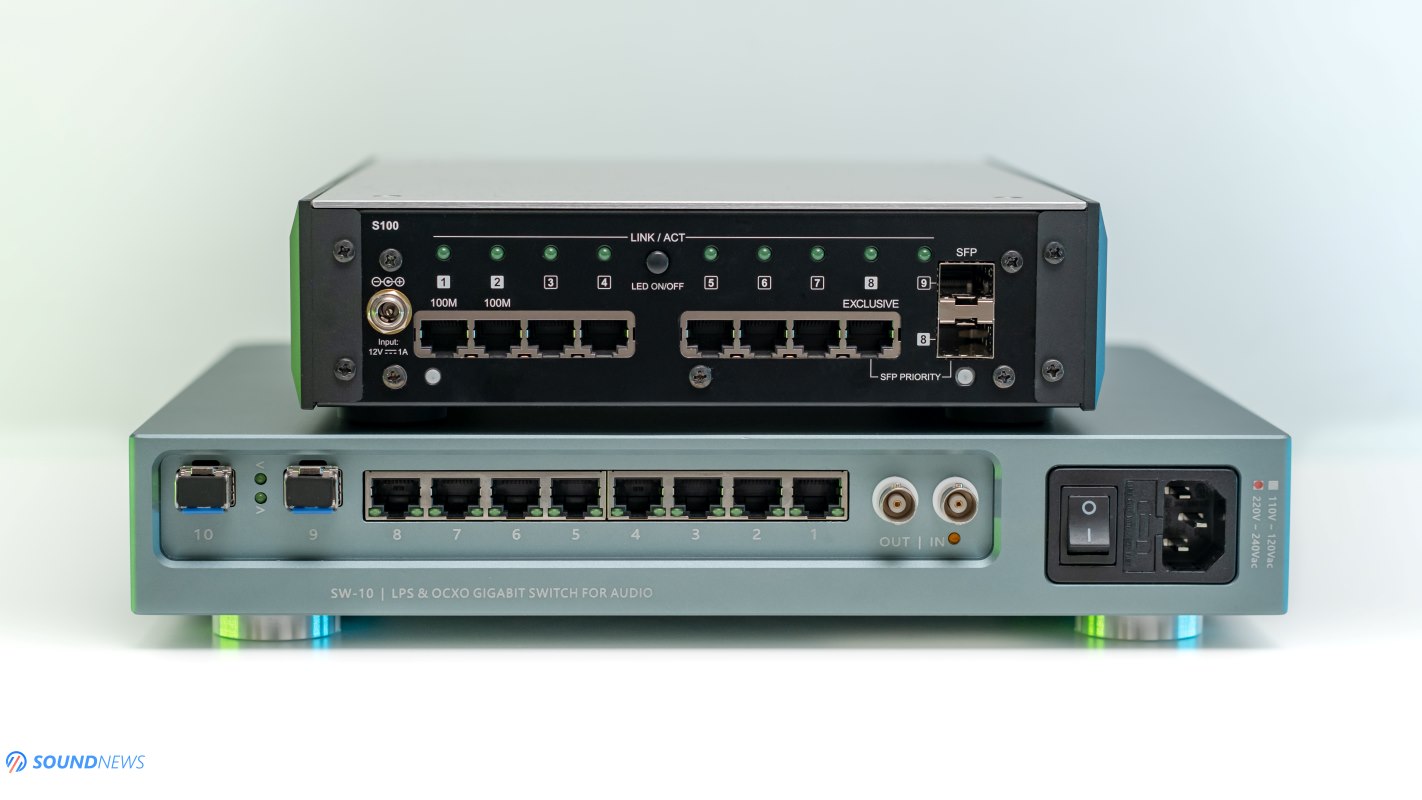
Wrapping Up
Networking works in mysterious ways, but this is ‘The Way,’ as Mandalorian puts it. It’s truly satisfying that top-tier offline music servers can now be matched performance-wise with a carefully selected set of electronics. While a wired streamer is a good start for your high-end DAC, the journey doesn’t end there. Clean up the remainder of the signal, and you’ll witness an even more refined experience. I recognize that this might be a controversial topic, potentially elevating your blood pressure, but I encourage an open-minded approach and an embrace of experimentation.
Hearing is believing my friends and that’s why I ventured into this sonic realm. This is still black magic to me, how can a network switch improve the sound of my wired streamer? But the experience was truly transformative. I tried about four network switches in the last month and while LHY Audio’s SW-10 wasn’t at the very top, it was close to the unobtanium level switches that can cost you as much as an end-game DAC. Living in a world of $5.500 (Melco S10), €5150 (Telegartner M12 Switch Premium) and $4.350 (Innuos PhoenixNET) network switches, LHY Audio’s SW-10, priced at just $1,349, feels like the best-kept secret in this domain.
In my setup, no single component has elevated the sound performance as significantly. The SW-10 stands out as the most satisfying addition to both my head-fi and stereo listening stations and I’ll gladly award it with our highest honors.

LHY Audio SW-10 was kindly provided by their worldwide distributor Beatechnik and you can get it from their web store right here. If you get one, please let us know how it performs in your streaming setup in the comments section below.
PROS:
- A beautifully crafted unit
- Rock-solid build quality
- Offers multiple inputs and outputs
- Impressive part selection down to the smallest details
- It will remove traces of noise
- It will improve the timing of your setup
- It will improve the dynamic range and the resolving abilities of your setup
- Adds control and a higher focus where there is none
- Adds smoothness and liquidity, completely removing brightness
- Improves the quality of the bass
- Adds organic matter, transforming a linear-sounding DAC into a fuller-bodied version of the same unit
- Highly engaging sounding
- Unlocks the potential of your streaming setup
- Affordable
CONS:
- The SFP input sounds slightly better than RJ45 inputs, so you’ll need to invest in a media converter for the best results
- A silver color scheme would be great to have in the future
ASSOCIATED EQUIPMENT:
- DACs: Chord Electronics DAVE, Rockna Wavedream Signature XLR, Gold Note DS-10 PLUS & PSU-10 EVO
- Wireless Streamer & Music Server: Rockna Wavedream NET 4TB, EverSolo DMP-A6, DMP-A8
- Network Switches: LHY Audio SW-10, Melco Audio S100/2
- Headphone Amps: Trafomatic Primavera, Enleum AMP-23R, Burson Audio Soloist 3X GT, Ferrum OOR & HYPSOS, Flux Lab Acoustics Volot
- IEMs: Westone Mach 50, Hiby ZETA, FiiO FX15, HiFiMan Svanar, 7Hz Timeless AE, Kinera Skuld & others
- Full-sized headphones: Meze Elite & 109 PRO, Erzetich Charybdis & Phobos V.2021, HiFiMan Susvara, HE1000SE, Arya Organic, Audivina, Audeze LCD-5 & LCD-4, Sennheiser HD800S, Kennerton Rognir (planar) & Vali, Apos Caspian, Sendy Peacock & Apollo, HarmonicDyne Elite & Poseidon, others
- Preamps: Chord Electronics Ultima 3 Pre
- Power Amps: Chord Electronics Ultima 5 Power, Burson Timekeeper 3X GT (x2)
- Loudspeakers: KEF Reference 3, Raidho TD 2.2 (incoming)
- Interconnects: Crystal Cable Reference2 Diamond (x3), QED Reference (x2), Topping TCX1 (x2)
- USB Cables: Supra USB Excalibur (x2), Chord C-USB, Matrix Hi-Fi USB
- HDMI Cables: Audioquest Diamond DBS, Supra 8K HDMI
- Speaker cables: Kimber PR8, Audioquest Type4
- Power Cables: Crystal Cable Reference2 Diamond (x3), Isotek EVO3 Premier (x2), iFi Audio SupaNova (x2)
- Balanced Isolation Power Conditioners: PLiXiR Elite BAC1500 (stereo setup), KECES IQRP-1500 and P14 (headphone setup)
